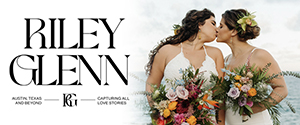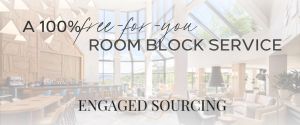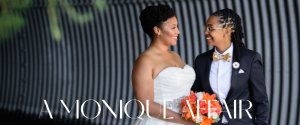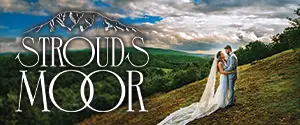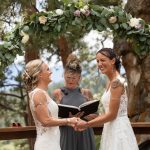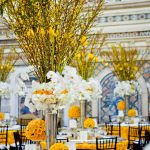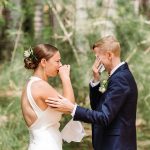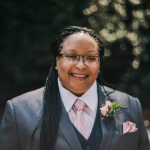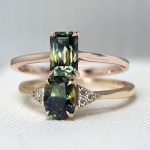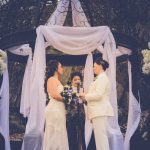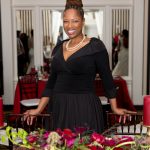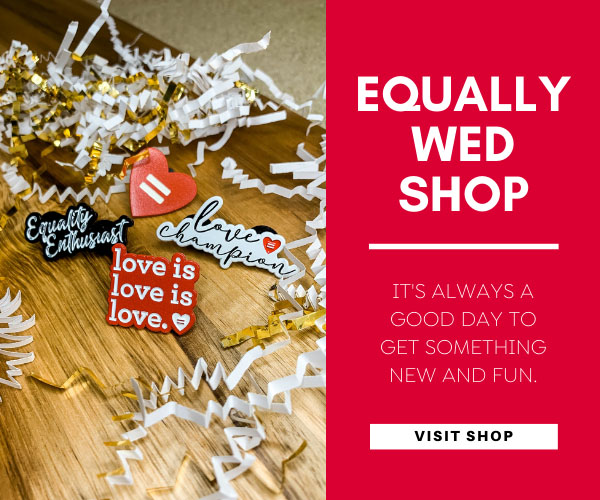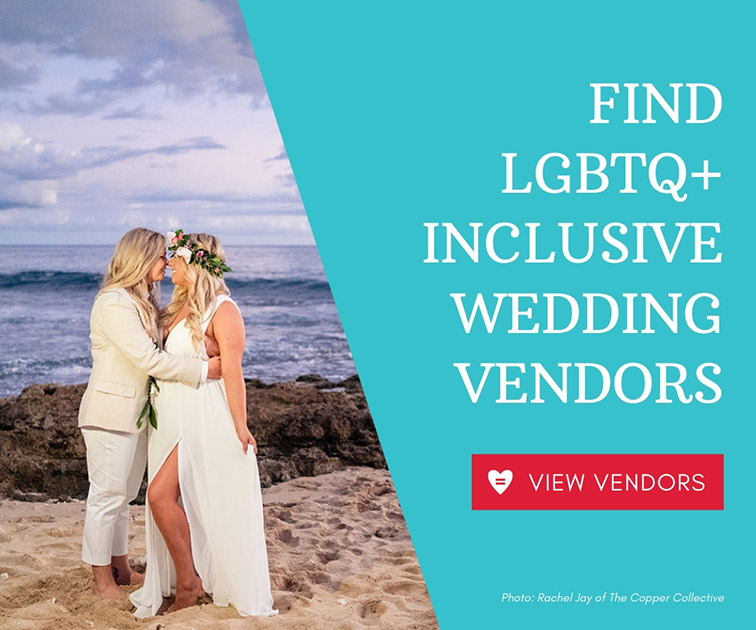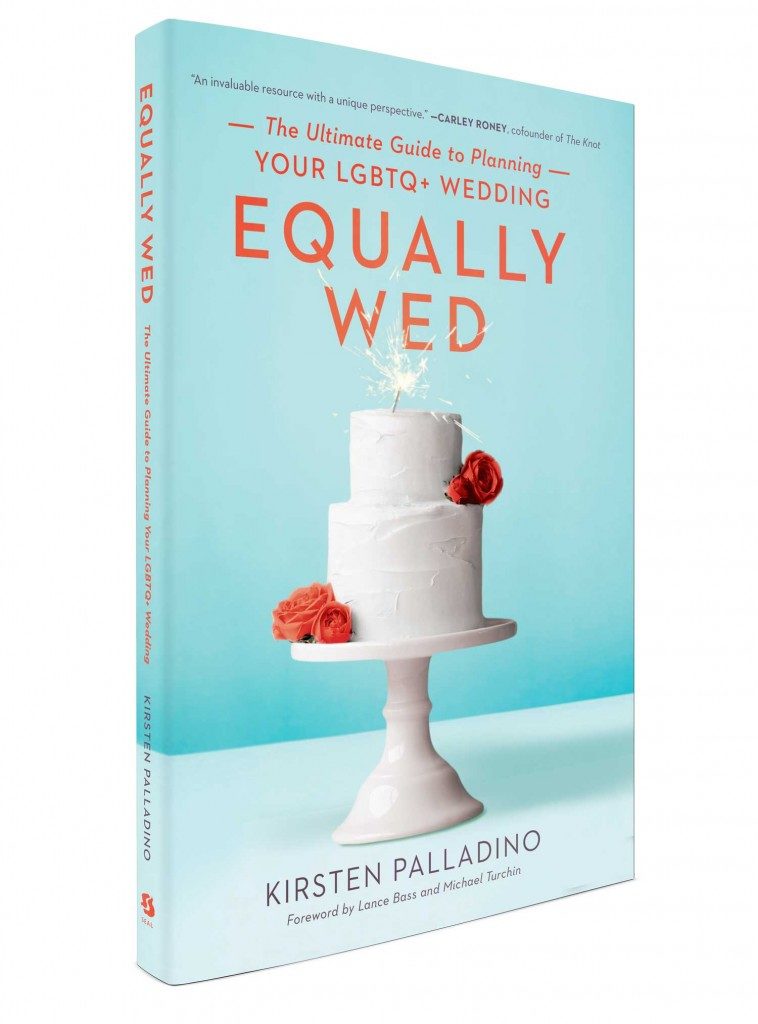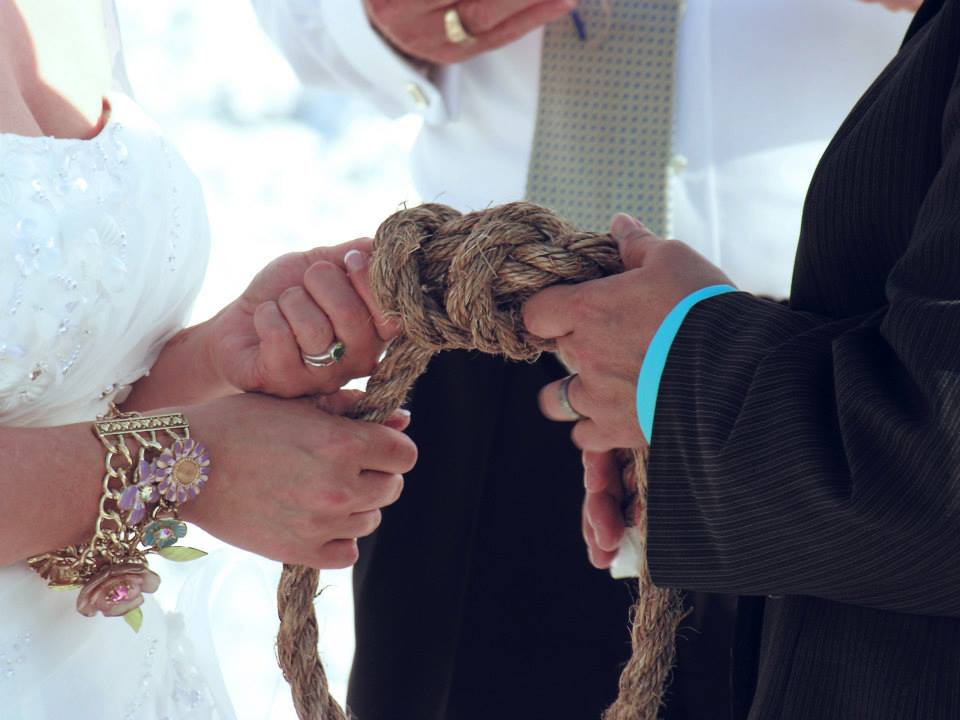
Clearing the air about misconceptions about what really goes on at same-sex weddings.
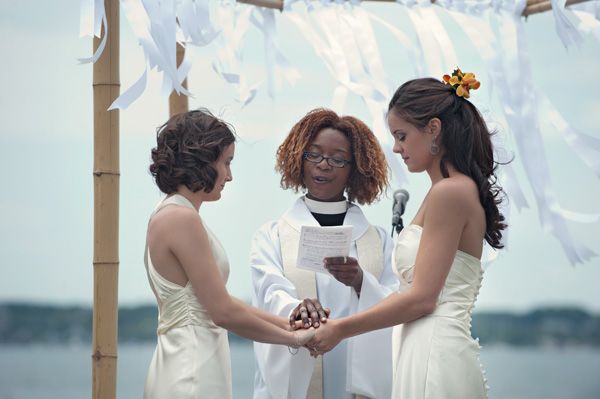
Now that there are more and more same-sex weddings being planned, it’s a really great time to take stock of how to serve these couples with their wedding plans. I’ve spent a lot of time speaking to people in the wedding industry about same-sex weddings, and I’ve noticed that a lot of people have misconceptions about what really goes on at these fabulous celebrations.
Combining their knowledge, Community Marketing & Insights, an LGBT research organization, and Gay Wedding Institute, a wedding planning company, surveyed more than 900 married and engaged same-sex couples to get answers to the burning questions about what really happens during the planning of a same-sex wedding. We asked about what traditions were followed (or not), where couples found their team of wedding vendors, the size of their wedding party, and much more.
So, without further ado, here are the top 10 myths about planning a same-sex wedding.
1. In a same-sex relationship there are gender roles (e.g., one “bride” and one “groom”). The “bride” in a gay relationship wears drag at his wedding, and the “groom” in a lesbian relationship wears a suit to hers.
Actually, only 4 percent of gay male couples and 36 percent of lesbian couples have one partner in a suit and the other in a dress. A traditional wedding is full of gender roles, like the fact that the groom is forbidden from seeing the bride before the ceremony and then has to lift her veil, but there is no need for those elements in a same-sex wedding. In short, we can do whatever the heck we want!
2. A civil union is good enough.
Not only are civil unions not federally recognized, but they carry little weight for same-sex couples. We are spending three times more on our weddings than we did on civil union or domestic partnership ceremonies. Seventy-six percent of those entering into civil unions or domestic partnerships had no reception or spent insignificant funds on their ceremony.
3. Gay couples have huge, over-the-top weddings.
By and large, the weddings we are having are much smaller than those of our straight friends. Not only are we generally not inviting our parents’ random friends, neighbors and co-workers, but we are often limiting the number of extended family (and unfortunately, sometimes our nuclear family too). Only 28 percent of same-sex weddings have more than 100 guests. And only 4 percent of same-sex weddings have a budget higher than $96,000. That number is 5 percent for straight weddings, by the way, so roughly the same proportion of each community is having luxury weddings.
4. Gay men spend more than lesbians. And older same-sex couples with money are spending more than young ones.
I know, it’s the age-old stereotype of rich gay men having over-the-top weddings. Well, we lesbians like to party too, and we actually spend 15 percent more than our gay brothers. Meanwhile, you would think that a couple that has been together a long time and is financially independent and settled would be spending more on their wedding, but it’s just not the case. Those couples who are now engaged are spending an average of 32-percent more than couples previously married.
5. A gay wedding is the same as a straight wedding.
We’re just not very traditional, and that’s especially true of gay men. Less than 15 percent incorporate traditional wedding features such as wedding showers, ring bearers and flower girls, a garter/bouquet toss and a receiving line. Even first dances aren’t ubiquitous: Only 35 percent of gay men and 58 percent of lesbians do them. And only 20 percent of us dance with our mom or dad. We’re finding that gay and lesbian couples like to skip traditions altogether or invent our own.
6. Parents of same-sex couples don’t support them.
Thankfully this is changing! Of the same-sex couples we surveyed who are already married, only 47 percent had the emotional support of parents. The good news is that 62 percent of engaged same-sex couples do. About one third of lesbians have some financial support from parents, as opposed to about 14 percent of gay men. Ten years after the first legal marriages started to occur, we’ve seen a big shift in public opinion, and this extends to parents of LGB kids.
7. Dads walk their gay and lesbian kids down the aisle.
Who’s the bride at a gay wedding? Well, sometimes there are two, and sometimes there are none, and sometimes one doesn’t feel like a bride. This gives us so much freedom in how we process into the ceremony space, and most of us aren’t being escorted by anyone! In fact, 78 percent of gay couples and 59 percent of lesbian couples enter that space together, unified, and many other couples walk down two separate aisles. Nobody has to be “given away” at a gay wedding; that’s just another silly gender norm.
8. We’ll only hire gay-owned businesses.
I get this question all the time from my peers in the wedding industry: “Will a same-sex couple hire me if I’m not gay?” Of course! Just because someone is gay doesn’t mean they are good at their job. Only 46 percent of same-sex couples really care about your sexuality. Personality is the most important factor for same-sex couples when choosing wedding professionals.
9. Same-sex couples have positive experiences when planning their wedding.
One in 4 same-sex couples experience some kind of outright discrimination or heterosexism while planning their wedding. This could be as big as being told, “You’re not welcome here,” or as simple as having to fill out forms (over and over and over again) that say “bride’s name” and “groom’s name.”
10. It doesn’t matter if your business uses LGB-inclusive language or photos.
If your marketing materials are focused on images of one bride and one groom, you’ve got to catch up. Seventy-two percent of same-sex couples are actively looking for vendors with LGB-inclusive language in their marketing. Sixty-nine percent want to see LGB-inclusive photos, and this is especially true of millennials. If you want to reach the young gay and lesbian population, then you can’t expect your bride-and-groom-centric materials to be good enough.
In short, same-sex couples have the ultimate freedom to do whatever the heck we want within our weddings. There are simply no rules, and we are loving every minute of being nontraditional and making our own traditions. But we do expect to be treated with respect, and we certainly don’t want you to assume that one of us is the bride—or assume anything, really. With us anything goes, and that’s a truly beautiful thing in a very heteronormative, straight industry.
Visit my website, 14stories.com, and follow me on Twitter @gaywedding.
Editor’s note: This article originally appeared on The Huffington Post, and it is republished with permission from the author.
Photography by Carla Ten Eyck Photography




